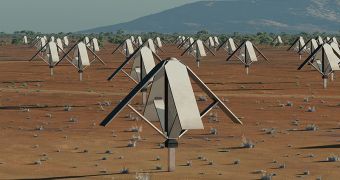Some analysts believe that Africa may soon start playing a more important role in the international astronomical community, particularly when it comes to radio astronomy capabilities. This return to science is largely promoted by the construction of sections of a massive radio interferometer in South Africa, the experts say.
While the number of opportunities available to African nations will indeed increase, the fact remains that all the countries on the continent – or at least those that function properly – need to take active steps to take advantage of these newly-opened doors.
During a presentation held at the 223rd meeting of the American Astronomical Society, near Washington DC, on January 9, western astronomers said that their African colleagues need to come up with ways to ensure that they will be included in the multitude of science facility to be built in Africa over the coming years.
US National Radio Astronomy Observatory (NRAO) astronomer Kartik Sheth said at the meeting that “astronomy really is about to explode across the African continent.” He added that the western world should not be interested in creating a brain drain from Africa to countries such as the United States.
Future innovation in African radio astronomy will be spurred by the construction of the Square Kilometer Array (SKA), the world's largest radio interferometer, which will have components spanning from South Africa to Australia. When completed, SKA will be 50 times more powerful than ALMA.
SKA will feature a total of 3,000 antennas, which is a combined collecting surface of one square kilometer, hence its name. Since it is built as an interferometer, it will behave as if it has a single antenna with a diameter equal to the longest distance between any two of its detectors.
“SKA will be the premier project of the coming decades, completely revolutionizing radio astronomy. The largest part of the SKA will be sited in Africa, and it's continent-wide, extending across eight African countries,” says the director of the South African Astronomical Observatory, Ted Williams.
Antennas will be installed in Madagascar, Mauritius, Namibia, Mozambique, Ghana, Zambia, Botswana and South Africa. Similar outposts will be constructed in Australia as well, but on a much smaller scale, Nature News reports.
SKA will cost an estimated $1.6 billion (€1.17 billion) to put together. Construction on its antennas are scheduled to begin as early as 2016, and will partially conclude by 2019. The telescope is expected to achieve full functionality and capabilities no later than 2024.

 14 DAY TRIAL //
14 DAY TRIAL //